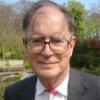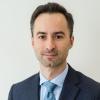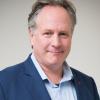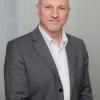This article discusses the accurate diagnosis of those persons of an addictive nature. This will be of help to anyone who is, or knows someone who is, exhibiting some of the signs of addiction and would like to know whether they should seek professional help.
Contents
- Cross addictions
- Denial
- Who is mis-guided?
- Fine line between genius and madness
- A place for medication?
Obviously the first essential is to make a sound diagnosis as otherwise there is a risk of treating someone who does not have a genuine addiction problem but is merely a casual user. For example, students may get drunk as part of their standard behaviour but this does not mean that they are alcoholic. There is an equivalent risk of under-diagnosis, failing to see that symptoms of emotional instability may in fact be due to an addictive tendency. Questionnaires, such as the CAGE questionnaire, can be helpful. The Doctor Robert Addiction Questionnaire covers sixteen potential addictive outlets. Possibly the most accurate assessment, however, is when one addict judges another: the “feel” is right – or not.
Cross addictions
Thus, having a firm hunch (it can never be more accurate than that) of a general diagnosis of an addictive nature, should then lead to an assessment of its various addictive outlets. This is important because there is not much point in treating one addictive outlet and turning a blind eye to others that the patient may have. Even so, this assessment should be tempered with reality: the most clinically significant addiction should be treated first. The others can wait, although one should always remember that addictive outlets come in clusters (possibly determined by genetic inheritance) and therefore the sufferer should be particularly aware of closely associated risks. For example, nicotine addiction doubles the risk of relapse back to alcohol dependence or drug addiction. Correspondingly, people with eating disorders (for which there is increasingly significant evidence of genetic linkage) need to be aware of compulsivity in areas of work, exercise, shopping and spending.
Denial
The really tricky bit in making a diagnosis of an addictive tendency is that the patient, and possibly his or her family and even a doctor, may disagree with it. Generally, people would prefer a diagnosis of stress or depression to one of addiction. Further, the basic psychopathology of addiction is denial. The addict simply does not see the truth of the diagnosis and it is highly skilled in convincing others that the problem is caused by circumstances in the outside world rather than coming from within. Again, it is other addicts who are best able to see past this denial because they remember their own experience. As with poachers turned gamekeepers, it takes one to catch one.
The further potential difficulty is in defining the desired end-point of treatment. For example, should the goal be sensible drinking or total abstinence? Are there grades of addictive substances so that one should worry about some (cocaine, heroin) but not so much about others (cannabis, ecstasy)? Alternatively, should the sufferer learn to be abstinent from all mood altering substances and processes, at risk of being thought extreme, or pick only those that he or she (or the family or counsellor or doctor) believes to be important?
The differing answers to these various questions result in differing policies in various agencies. For example, there are those that believe that Methadone maintenance is a treatment for heroin addiction (because it reduces the risk of transmission of blood borne viruses) whereas others would say that addiction to methadone can be just as devastating, emotionally and physically, as heroin addiction and they point out that addicts will commonly use heroin on top of their supply of medicinal methadone.
Who is mis-guided?
At each stage of diagnosis and treatment there are divisions of opinions between addicts themselves and also in their families, doctors, psychiatrists, social workers, counsellors, probation officers, politicians and in the population at large. The problem is that, as with differing political or religious beliefs, each individual tends to believe that his or her viewpoint is the absolute truth and that others are misguided.
It could therefore be argued that there is no point in trying to form a consensus of opinion or in determining, through government policy or National Institute of Clinical Excellence guideline, how addictive tendencies should be assessed and tested. That would certainly be logical – but governments like to be pro-active on the basis that something must be done – or at least seen to be done. In this way, governments become major determinants of concepts, not merely of policies. For example, some governments are laissez faire, believing that the use of addictive substances is a lifestyle choice, whereas others believe it to be so criminal and anti-social that it should be punishable by death.
It is, of course, healthy that opinions should differ. This is the essential prerequisite of progress. Absolute beliefs imposed by government, or by healthcare authorities of one kind or another, will tend to produce the opposite of progress. Any new idea might be seen as heresy.
In clinical practice one has to do what one believes to be right. Any counsellor or doctor who is prepared meekly to obey the orders of various clinical or political authorities betrays his or her fundamental commitment to the welfare of his or her patients. On the other hand, when working in a specific organisation, such as an addiction treatment centre, there has to be an agreed policy because otherwise the patients will divide and rule the staff. The ideal situation is pluralistic, whereby governments permit a range of ideas to be put into practice and instigate research studies in order to discover which ideas have some verifiable foundation and which are merely fanciful.
Fine line between genius and madness
To some extent the situation in the UK is pluralistic but the advent of the Healthcare Commission, the Commission for Social Care Inspection and the National Institute for Clinical Excellence, tends to make it more difficult to do anything other than toe the party line. Of course it is right that patients should be protected from the activities of dangerous charlatans, but who defines the dividing line between genius and madness? Of course it is right that research-based evidence should be the guiding principle for clinical practice, but this is a difficult enough principle to put into practice in diabetes, where research budgets are vast and where clinical problems can be relatively straightforwardly defined. In psychiatry in general, and in addiction in particular, the problems are multi-factorial to the extent of being nebulous and the issues are complex but the research budgets are minimal.
Notwithstanding the impressive diagrams in advertising literature produced by the pharmaceutical industry, our knowledge of brain biochemistry is in its absolute infancy. Yet prescriptions for mood-altering medication tend to be the order of the day in psychiatry. This is a tragedy. The human brain looks after itself very well when allowed to do so in a supportive community. In Minnesota, long term follow up studies on patients diagnosed with schizophrenia, found that most were free from medication and were actively involved in their local society.
As far as addiction is concerned, the Twelve Step Programme first formulated by Alcoholic Anonymous and now widely adopted by people with other addictions, enables sufferers to live drug-free, having happy and creative lives as a result of the support they receive from other addicts with whom they share their experience in regular meeting.
In this way it appears that when A reaches out to help B, it is A who gets better: the altruistic behaviour is mood-altering in itself and therefore has the capacity to be a substitute for the mood-altering effects of addictive substances and processes. The biochemical autonomy of the brain is preserved and it harnesses its own powers of recuperation.
A place for medication?
This does not imply that there is no place for medication. A five to ten day process of gradual detoxification from addictive substances helps patients to become abstinent comfortably. Dual diagnosis of a psychiatric illness usually requires medication for a time. Dual diagnosis of depressive illness is more contentious because the state of inner emptiness that addicts feel, and with which they may even have been born and which leads to cravings for mood-alteration, could be seen as the true basis of much depressive illness, (whereas sadness is the result of misfortune or social circumstances and needs personal support and time rather than medication to help it to resolve).
Doctors, understandably, will tend to do what we have been trained to do. In psychiatric illness we have traditionally been trained primarily to prescribe medications or to provide Cognitive Behavioural Therapy in the hope that patients will see reason. Addicts generally cannot see reason or, at least, they have their own rationalisations and justifications for their behaviour. Further, addicts are generally delighted to be prescribed medication because it validates their belief that someone or something else should somehow take responsibility for changing the way they feel. They may become addicted to prescription medication. Antidepressants may be major addictive drugs in people who have an addictive tendency. Weaning addicts off pharmaceutical drugs can be exceedingly challenging because of the understandable response “My doctor gave it to me”.
Hardly a week goes by without the press blazing a new “cure” for addiction. Sometimes this is a new wonder drug or a vitamin or mineral supplement. At other times it is a magic therapy.
Clinical and financial turf wars may break out between the advocates of differing approaches. Far from looking to see the issues upon which they might agree with each other, the various agencies embodying particular clinical philosophies may be mutually antagonistic.
My own attitude, after twenty three years of running a residential treatment centre, has come to be that anyone who tries to help addicts is a friend. We may discuss ideas and therapeutic techniques but I accept the good intention. My hope is that one of my legacies will be the Doctor Robert Addiction Questionnaire, in which addicts are assessed, not on what or how much or when they use an addictive substances or process, but on why. This crucial question, in various forms, leads to the understanding that addicts perpetually search to change the way they feel. They want something “out there” to influence the way they feel “in here”. The essential difference between therapeutic approaches is in whether something is done to the patient (such as through prescribing or using other externally induced interventions) or with the patient (helping him or her to understand self and become committed to self-healing in the company of others doing the same).
In this article I have attempted to show that there are as many differing approaches towards the understanding of treating addiction as there are counsellors or doctors. I think this is just as it should be. Progress comes through keeping our minds open to new suggestions, trying out whatever approach seems to be most sensible and assessing its effectiveness, and then keeping our minds open again to further new ideas.




